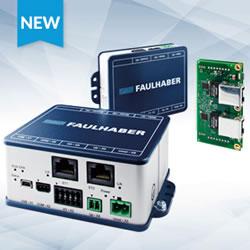How Does Zero Trust Apply to Robotics?
.jpg)
Compromised security in robotics is well-documented. The vulnerabilities stem from weak practices that expose them to unauthorized access, data breaches and function manipulation. With smart cameras mounted on almost every building corner, the way to fight against jeopardizing the entire system is through adopting zero trust architecture (ZTA).
Treat Every Robot and Component as a Resource
Zero trust assumes no device is inherently safe, whether a collaborative robot in a factory cell or a smart lawnmower in a consumer’s backyard. Hence, it does not trust any component and requires manual verification to ensure protection. Under ZTA principles, all data sources and computing services — robot controllers, HMIs, cloud APIs and even microcontrollers — are classified as resources.
This classification enforces a uniform policy enforcement. For a manufacturing engineer, your SCADA and PLCs are no more trusted than a tablet on the office Wi-Fi. For robotics product managers, a firmware module is governed by the same security posture as a customer-facing mobile app.
Secure All Internal and External Communication
In many industrial networks, internal traffic moves with minimal checks once inside the perimeter. That’s where the castle-and-moat problem emerges. Threat isn’t merely external, so attackers can move laterally to the robots once an internal system is compromised.
ZTA calls for encrypting all robot-related traffic, whether between a robot and its control network or between a consumer vacuum and its mobile app. It emphasizes adding authentication to every communication link, even inside operational technology environments.
While some industrial robots may have basic safeguarding measures, many lack endpoint-level protection. One study analyzed over three million communication packets from seven robots, which led to the discovery of vulnerabilities in confidentiality, integrity and availability. The data was used to develop an automated attack that manipulated operations. It also implied that SCADA systems can be fooled and that security gaps remain a serious problem, making them easy targets.
Grant Access Per Connection, Not Per Session
Authorizing a user or device once and then granting broad access is a recipe for breach escalation. ZTA requires reauthorization for each connection to limit exposure should credentials be stolen.
This means a maintenance laptop authenticated to update a robot’s firmware should not be able to access unrelated process controllers. A remote support API for a home automation device should only interact with its paired hardware, not any other products from the same manufacturer.
Maintain Devices in a Secure State Continuously
Periodic audits are insufficient. Instead, zero trust expects continuous diagnostics and mitigation (CDM). This involves promptly applying security patches to control software and embedded firmware and monitoring for unauthorized changes in system configuration or executable files.
In IoT surveys, weak and default passwords are the weakest link, attracting attacks. Lax network services and missing software updates are the next common flaws. To resolve this, passwords should be changed immediately and updated every three months to ensure hackers cannot access accounts.
Enforce Policy Based on Real-Time State and Behavior
Zero trust policies go beyond static role assignments. They consider firmware versions, known vulnerabilities, device location and observed activity.
- Industrial application: If a cobot’s controller runs outdated programs with unpatched CVEs, access to certain operations can be automatically restricted until it’s updated.
- Consumer application: An automated mower behaving outside its normal operating pattern, such as issuing navigation commands at night, could trigger automatic isolation until it is verified safe.
- Engineer application: Integrate behavioral analytics directly into robot management platforms rather than relying on upstream network monitoring.
Dynamic Authentication and Authorization for Every Request
Static trust levels don’t adapt to changing risk. ZTA mandates a constant loop of authentication, scanning and risk reassessment. For example, if a cobot begins communicating with unfamiliar endpoints in an industrial plant, the Policy Enforcement Point (PEP) can block traffic until the Policy Decision Point (PDP) approves it.
Meanwhile, over-the-air update servers should require reauthentication before each update push, for consumer robotics, preventing stolen keys from authorizing malicious code. This approach benefits people by reducing the chance of unsafe operations, protecting sensitive data and ensuring devices behave as intended.
Collect and Use Telemetry to Strengthen Policies
ZTA uses telemetry for after-action audits and as a continuous input for policy refinement. This involves capturing:
- Network traffic patterns between robots and controllers.
- Frequency and origin of access requests.
- Code signing verification logs for every update.
By centralizing code signing and key management in home robotics, organizations can prevent unauthorized firmware distribution across customer devices, from lawnmowers to home security drones.
Secure Endpoints Not Just the Network
In a ZTA, protecting endpoints means giving each device unique credentials to prevent attackers from reusing stolen logins, enforcing secure boot and firmware verification so only trusted software can run and isolating critical control processes from non-critical functions to ensure that a compromise in one area cannot disrupt or take over core operations.
Integrate Zero Trust into the Development Process
Security gaps in robotics often start during development rather than deployment, since complex architectures link device firmware, cloud services and back-office control systems. Under a ZTA, development teams can minimize these risks by signing every code component — including third-party libraries — to ensure authenticity, storing signing keys in FIPS 140-2 compliant hardware instead of build machines to prevent theft and scanning code continuously throughout the CI/CD pipeline rather than only at release.
These measures make it harder for malicious code to slip in early, reducing the chances of vulnerabilities being carried into production systems.
Zero Trust Architecture For Infinite Safety
Robots may work tirelessly for you, but you can’t afford to have them turn against you. By hardening your endpoints, securing your software supply chain and enforcing continuous verification, zero trust closes the most common attack paths long before they can be exploited, from development to deployment.
Comments (0)
This post does not have any comments. Be the first to leave a comment below.
Featured Product

